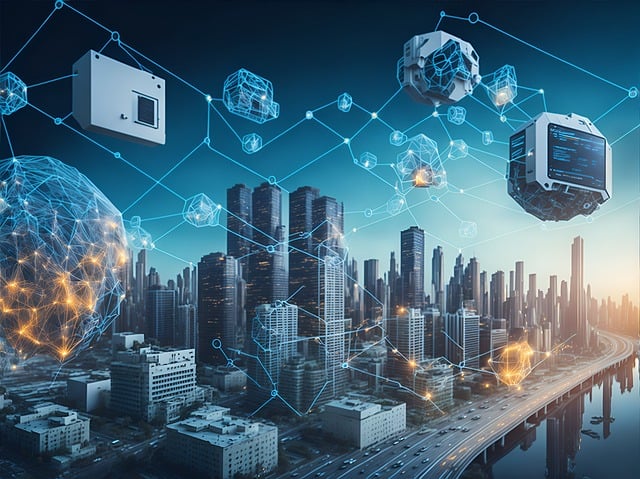
Introduction
The dawn of 5G technology represents a transformative leap in the world of telecommunications, promising unprecedented speed, connectivity, and capability. As we stand on the brink of this technological revolution, it’s crucial to explore not only what 5G can offer but also what lies beyond its horizon. This article delves into the future of 5G and the emerging technologies that are set to shape the next era of connectivity.
Understanding 5G Technology
What is 5G?
5G, or fifth-generation wireless technology, is designed to surpass the capabilities of its predecessors—4G, 3G, and 2G. It introduces several advancements that make it a game-changer in the realm of communication:
- Increased Speed: 5G networks offer speeds up to 100 times faster than 4G, enabling instantaneous data transfer and streaming.
- Reduced Latency: Latency, or the delay before a transfer of data begins, is significantly reduced in 5G. This is crucial for applications requiring real-time feedback, such as autonomous vehicles and virtual reality.
- Enhanced Capacity: 5G can support a vastly greater number of devices within a given area compared to previous generations. This is vital for the Internet of Things (IoT), where billions of devices need to communicate seamlessly.
- Improved Reliability: The technology promises a more stable and reliable connection, reducing dropouts and connectivity issues.
The Architecture of 5G
5G’s architecture is built on three primary components:
- Enhanced Mobile Broadband (eMBB): This focuses on providing high-speed internet access for mobile devices, improving the quality of streaming and browsing.
- Ultra-Reliable Low Latency Communication (URLLC): This is designed for applications requiring near-instantaneous data transmission, such as remote surgeries and industrial automation.
- Massive Machine-Type Communication (mMTC): This supports a vast number of connected devices, making it ideal for smart cities and IoT.
The Future of 5G: Trends and Predictions
Expansion and Integration
As 5G networks continue to roll out globally, we can expect:
- Global Coverage: The expansion of 5G will eventually cover more remote and rural areas, bridging the digital divide and ensuring more equitable access to technology.
- Integration with Emerging Technologies: 5G will seamlessly integrate with technologies like Artificial Intelligence (AI), Blockchain, and Augmented Reality (AR), enhancing their capabilities and applications.
Impact on Various Sectors
- Healthcare: 5G will revolutionize telemedicine, allowing for real-time remote consultations and even remote surgeries with minimal latency.
- Automotive: The automotive industry will benefit from 5G’s low latency, enabling more sophisticated autonomous driving systems and improving vehicle-to-everything (V2X) communication.
- Manufacturing: In smart factories, 5G will enable real-time data analysis and automation, improving efficiency and productivity.
- Entertainment: Enhanced streaming quality and immersive experiences in AR and VR will become more prevalent, changing how we consume media and entertainment.
Beyond 5G: The Next Frontier
6G Technology
As 5G matures, research into 6G technology has already begun. 6G is expected to build upon the foundation laid by 5G, offering:
- Terahertz Frequencies: 6G will utilize terahertz (THz) frequencies, enabling even faster data transfer rates and more efficient spectrum use.
- Enhanced Connectivity: 6G aims to provide ubiquitous connectivity, ensuring that every device, vehicle, and individual is seamlessly connected at all times.
- Advanced AI Integration: AI will play a central role in 6G, optimizing network management and enabling more personalized and adaptive services.
- Holographic Communication: One of the most exciting prospects of 6G is the potential for holographic communication, allowing for lifelike virtual interactions and experiences.
Quantum Computing
Quantum computing, while still in its nascent stages, could significantly impact the future of connectivity. It has the potential to:
- Enhance Data Security: Quantum encryption could offer unprecedented levels of security for data transmission, addressing current vulnerabilities.
- Optimize Network Operations: Quantum computing could optimize network management and data processing, improving overall efficiency and speed.
- Drive Innovation: The computational power of quantum computers could lead to breakthroughs in various fields, including materials science, drug discovery, and artificial intelligence.
Challenges and Considerations
Infrastructure and Investment
The deployment of 5G and beyond requires substantial investment in infrastructure, including new base stations, antennas, and fiber optic cables. This presents challenges in terms of cost and logistical implementation, particularly in less developed regions.
Privacy and Security
With increased connectivity and data transfer comes heightened concerns about privacy and security. Ensuring robust encryption and safeguarding against cyber threats will be critical as technology advances.
Health and Environmental Impact
There are ongoing debates about the potential health and environmental impacts of 5G technology. While scientific consensus generally supports its safety, continued research and monitoring will be essential.



